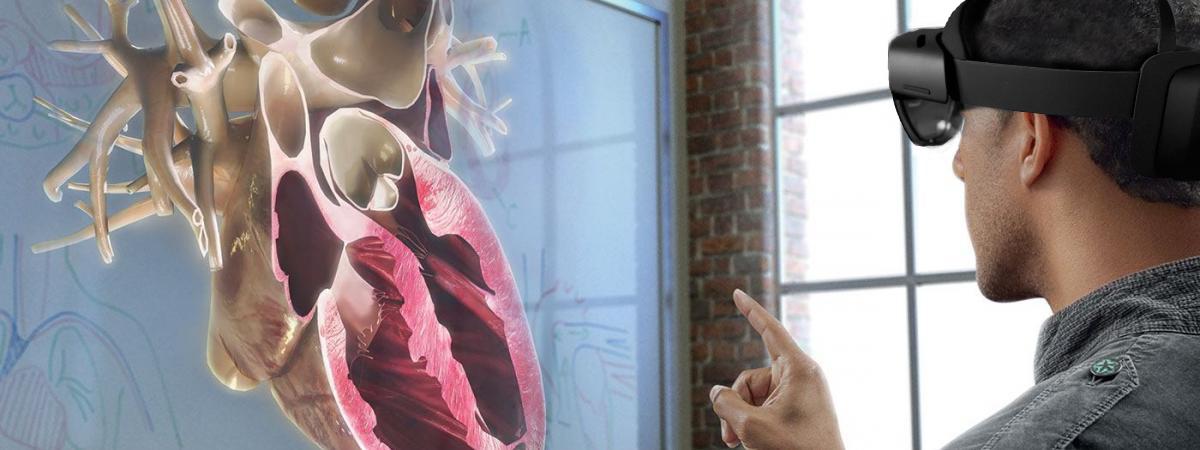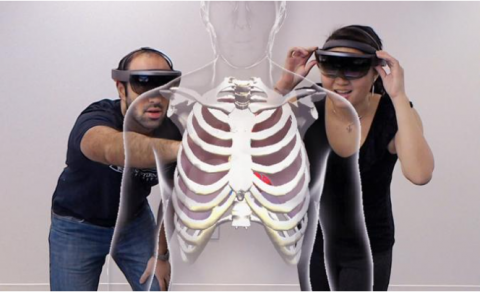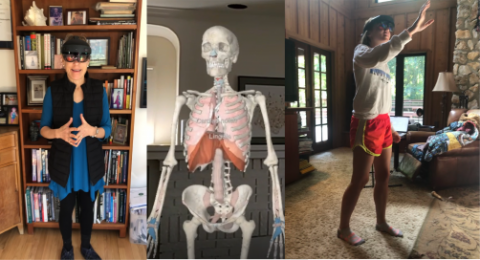HoloAnatomy is one of few software suites using the next generation of extended reality technology: mixed reality.
But what exactly is mixed reality? How is it different from augmented or virtual reality?
How can mixed reality change how we think of the future?
What is Mixed Reality?
Extended Reality (XR) is an umbrella term covering all of the various technologies that enhance our senses, whether they’re providing additional information about the actual world or creating totally unreal, simulated worlds for us to experience. It includes Virtual Reality (VR), Augmented Reality (AR), and Mixed Reality (MR) technologies.
- Augmented reality (AR) adds digital elements to a live view, often using the camera on a separate device such as a smartphone or tablet. Examples of augmented reality experiences include Snapchat lenses and the mobile app game Pokemon Go.
- Virtual reality (VR) implies a complete immersion experience that shuts out the physical world. Using VR devices such as HTC Vive, Oculus Rift, or Google Cardboard, users can be transported into a number of real-world and imagined environments such as the middle of a squawking penguin colony or even the back of a dragon.
- Mixed reality (MR) experiences combine AR and VR elements, where real-world and digital objects interact. Holograms are projected into the physical world, which can be directly manipulated, similar to concepts explored in science fiction. Mixed reality technology is just now starting to take off with Microsoft’s HoloLens, one of the most notable early mixed reality apparatuses.
Mixed Reality in Education
Imagine being able to hold the entire solar system in your hands or taking apart a car engine in your living room.
The interactive models make it possible to do almost anything with just a headset and an open space, even conduct human cadaveric dissection.
But what are the advantages of using mixed reality?
- Create, collaborate, learn in new ways
Schools are using mixed reality to improve collaboration and enhance learning opportunities for students. - Increase efficiency and quality
Students are more effective at solving tasks with the information and data they need in the physical context of their environment. - Empower all students and educators
Bring innovative technology and drive digital transformation across all students and educators.
It’s time to push the boundaries of how we previously defined reality.
Step into the future with HoloAnatomy’s mixed reality software suite and begin thinking beyond the possible.






